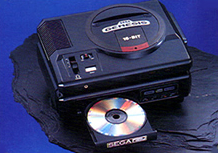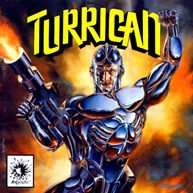Throughout the lifetime of the Genesis, Sega spent millions of dollars to bring its user base to “the next level.” The Sega CD was the first major hardware addition, and it served as the platform for what became Sega’s full-motion video assault. Along with Digital Pictures, Sega’s own TruVideo line of titles offered gamers several different adventures with which to “interact.”
 One of the people heavily involved with Sega’s FMV releases was Christopher Bankston. Starting in the music industry, Bankston quickly made a name for himself and landed at Epyx and then Accolade, where he spent several years producing such games as Star Control and Turrican. Eventually, he made his way to Sega, where by age thirty-two, he was heading his own studio. As a senior producer at the company, he oversaw such titles as Tomcat Alley, Fahrenheit, Wirehead, and Prize Fighter. Bankston left Sega after several years and continued to work in the game industry, and with over forty releases to his credit, he now works as an entrepreneur, independent producer and business consultant within the film, television, and video game industries.
One of the people heavily involved with Sega’s FMV releases was Christopher Bankston. Starting in the music industry, Bankston quickly made a name for himself and landed at Epyx and then Accolade, where he spent several years producing such games as Star Control and Turrican. Eventually, he made his way to Sega, where by age thirty-two, he was heading his own studio. As a senior producer at the company, he oversaw such titles as Tomcat Alley, Fahrenheit, Wirehead, and Prize Fighter. Bankston left Sega after several years and continued to work in the game industry, and with over forty releases to his credit, he now works as an entrepreneur, independent producer and business consultant within the film, television, and video game industries.
We were lucky enough to chat with Mr. Bankston about his time at Sega and Accolade.
Sega-16: How did you come to work at Sega?
Christopher Bankston: I started work in the industry at Epyx in 1987. A lot of people who worked there ended up at SEGA. Joe Miller was a VP at Epyx and then became Senior VP at SEGA. He is one of the best executives that I have ever worked with to date. We kept in touch and he knew about my interest in making full motion video games. When SEGA began to venture into that area I became very interested and made the move over to SEGA.
Sega-16: As a senior producer for Sega’s TruVideo line of full-motion video games. How large exactly was your group and what were your responsibilities?
Christopher Bankston: That was probably the most work I have ever done in my career. We set up offices in Beverly Hills and had a small team of full time employee’s and hundreds of contract people working on each production. I was responsible for the day-to-day management of the offices, budgets, schedules, meeting executives and talent in the movie industry to help them understand the direction we were taking entertainment with technology in addition to producing a half dozen titles and another half dozen “test” titles. At one point in time I must have been overseeing about 500 people. It was a lot of work but very, very gratifying.
Sega-16: Most people believe that Sega considered FMV to be the future of multi-media. Was this really the corporate environment?
Christopher Bankston: No. We believed it would be a branch of entertainment but not the only form. There were people within the corporation that understood that there would inevitably be a merging of the industries due to the rapid increase in technology. Now we see movies and video games released using the same elements and technologies.
 Sega-16: What did you think of it all — the whole FMV charge that Sega and Digital Pictures were leading?
Sega-16: What did you think of it all — the whole FMV charge that Sega and Digital Pictures were leading?
Christopher Bankston: It was my passion. I studied film making and had a vision that was shared by others within the company. Digital Pictures did not share the same vision which is why we decided to set up our own operation in L.A. but I have to say honestly that it was one of the most rewarding experiences of my career.
Sega-16: Considering the history between Accolade and Sega, what was it like for you, making the jump from one company to the other?
Christopher Bankston: It was very hard in some respects. I have a great deal of respect and admiration for Al Miller, the co-founder of Accolade. But I had a history with the folks at SEGA too, and they shared my vision at that time to produce games using film and technology. I actually tried to foster some business between the two companies. Back then the industry was very family like as the pool of people was quite small compared to today.
Sega-16: The Genesis port of Double Dragon is quite close to the arcade original, but it runs much, much faster, and it directly affects the gameplay. Why does it play so much faster? Was this something that was intentional, or did it just end up running that fast by the end of the development cycle without being planned?
Christopher Bankston: We had a great SDK and great coders. =)
Sega-16: When Sega revised the Genesis hardware, Accolade had to reverse engineer it again to make its games compatible. Onslaught didn’t work with the new machines because its programmer reportedly didn’t place the TMSS (Trade Mark Security System) initialization code in the correct location. What was your reaction to all of this? Accolade must have been MIGHTILY upset that it had to go back and work with yet another revision of Sega hardware. Did this affect Onslaught’s sales?
Christopher Bankston: Wow. The making of Onslaught was an onslaught of sorts. We had contracted a company called Hewson in England to make the game for us. One morning I made my daily call only to find a lawyer on the other end informing me that the company had gone bankrupt. I promptly did some research and found the two programmers doing the game, met with Al Miller and within a few days was in Liverpool working out things with the programmers to finish the product. Considering we got the product out successfully and under extraordinary circumstances, there was no upset whatsoever to my knowledge.
Sega-16: You worked on both Turrican and Universal Soldier for the Genesis and other machines. We know that US was basically Turrican 2 with some changes made to accommodate the movie license. Were there ever any plans to release the game as a direct sequel to Turrican, without the license?
 Christopher Bankston: Turrican was a great product and we were going to do Turrican 2 regardless. When the opportunity arose to do the movie license it made sense because that is where the industry was heading at that time. It was a bit frustrating however since we had to constantly get approval of every little thing from the talent.
Christopher Bankston: Turrican was a great product and we were going to do Turrican 2 regardless. When the opportunity arose to do the movie license it made sense because that is where the industry was heading at that time. It was a bit frustrating however since we had to constantly get approval of every little thing from the talent.
Sega-16: Do you have any other Sega-related anecdotes you’d like to share?
Christopher Bankston: My tenure at SEGA was one of the best times of my entire career. Tom Kalinske, Shinobu Toyoda and Joe Miller “got it” and let us run with it. The company at that time had a group of people who were extremely dedicated and worked hard to achieve what SEGA had at that time which was number one in the industry.
Our thanks to Mr. Bankston for taking the time for this interview.

Recent Comments